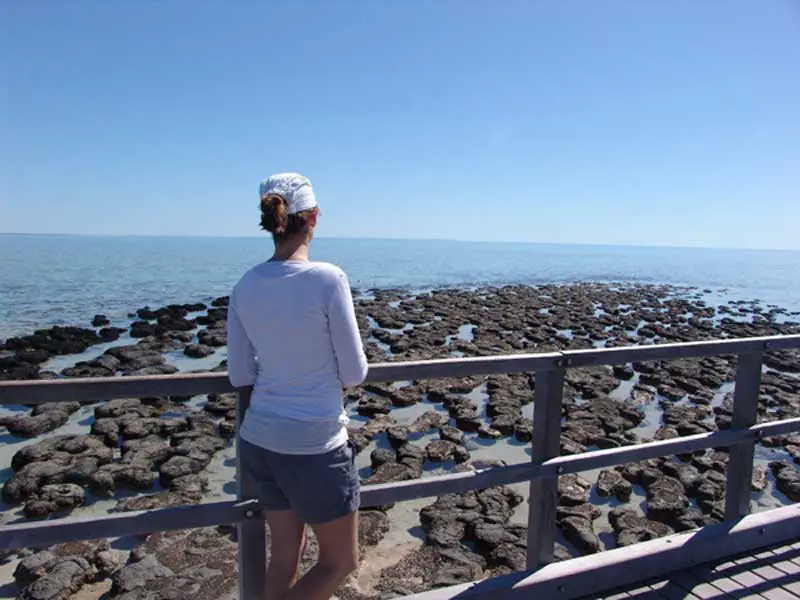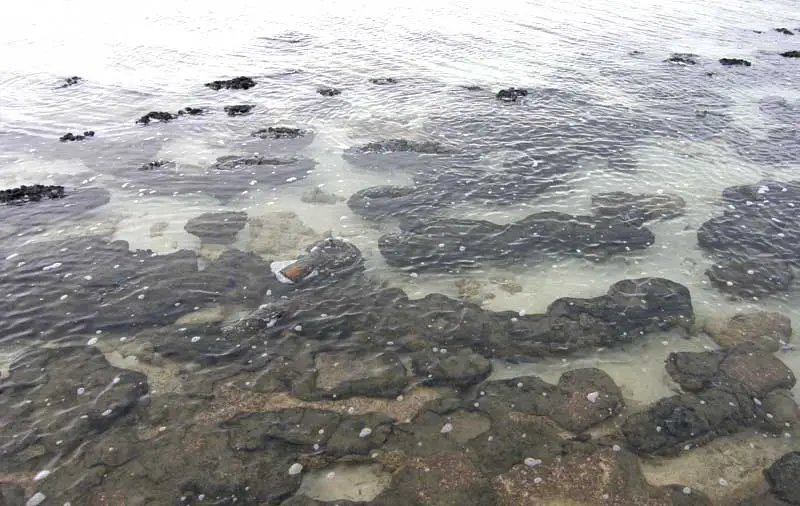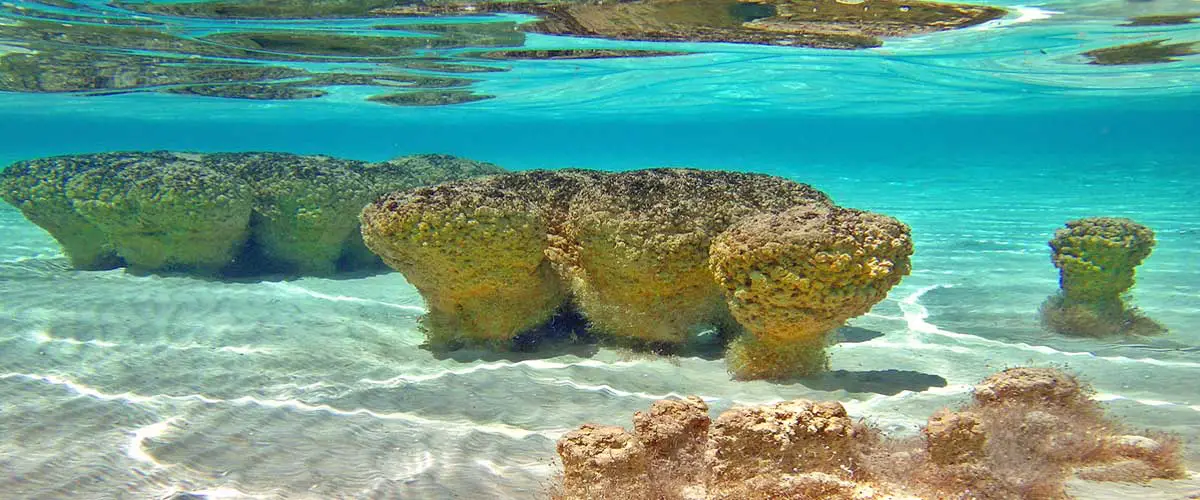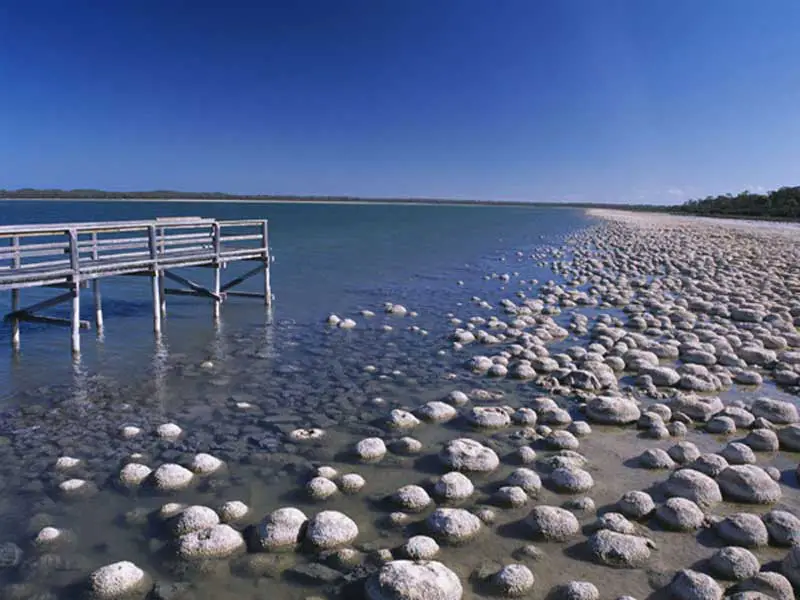
At Hamelin Pool, which is a bay within the Shark Bay World Heritage Area on the Western Australian Coral Coast, is where stromatolites – the world’s oldest organisms – can be seen. Stromatolites are believed to be the result of primitive life forms that are believed to have first existed on earth 3.5 billion years ago. They are the earliest known form of life on earth. The dome shaped structures reach up to 60cm in height and are formed by single celled organisms called cyanobacteria. The process continues today.

Bubbles coming from the Stromatolites are evidence of the organisms ‘breathing’
The Stromatolites at Hamelin Pool represent an outstanding example of the earth’s evolutionary history. Just south of Monkey Mia and Denham, this massive occurrence of Stromatolites is easily accessible by way of an educational boardwalk at Hamelin Bay.
The low tidal flow in Shark Bay has created hypersalination, a level of salt twice that of normal seawater. In these salty pools, Stromatolites grow at a rate of less than 1mm per year. A microorganism, cyanobacteria build up, trapping fine sediment particles from the warm water and binding it together with mucus. This unusual life form grows to about 60cm tall and look like mushroom-shaped rocky domes. The discovery of these living fossils was akin to finding a live dinosaur.

When the Shark Bay Stromatolites were discovered by scientists in 1956, they were the first growing examples ever recorded of structures, found fossilised in very old rocks, that had puzzled geologists for more than a century. The living microbes that built the Stromatolites are similar to those found in 3500 million year old rocks, which are the earliest record of life on Earth.
A wooden boardwalk at Hamelin Pool allows people to view the Stromatolites without damaging them. It incorporates informative panels that give visitors a fascinating insight into the formation and lifestyle of the Stromatolites and is a good way to find out about the beginnings of life of Earth.

Lake Preston stromatolites
Myalup, a coastal village to the south of Perth, Western Australia, is on the southern edge of the Yalgorup National Park, a haven to native wildlife and bird sanctuary as well as a home to stromatolites. Lake Preston, the largest of the nine lakes in the park, also borders the town. The town also has a caravan park, chalets, recreation ground and store, and a white-sand beach continuous to and shared with Binningup 5 km to the south.

Lake Preston stromatolites
The Lake Thetis stromatolites exhibit unusual columnar branching. These narrow, closely spaced and almost parallel columns are extremely rare in modern stromatolites. Alongside the stromatolites, a diverse array of benthic microbial communities, such as algal mats, inhabit various layers of the lake. Some of these algal mats are associated with the stromatolites while most confine themselves to a particular area such as the high foreshore areas, splash zone or the central basin of the lake.
The lake water is alkaline and nutrient poor but provides an ideal environment for bottom dwelling microbial communities. The lake contains some small fish, amphiods and a few crustacean species adapted to living in highly saline environments. The lake is situated east of Cervantes, 2 km inland from the Indian ocean.









